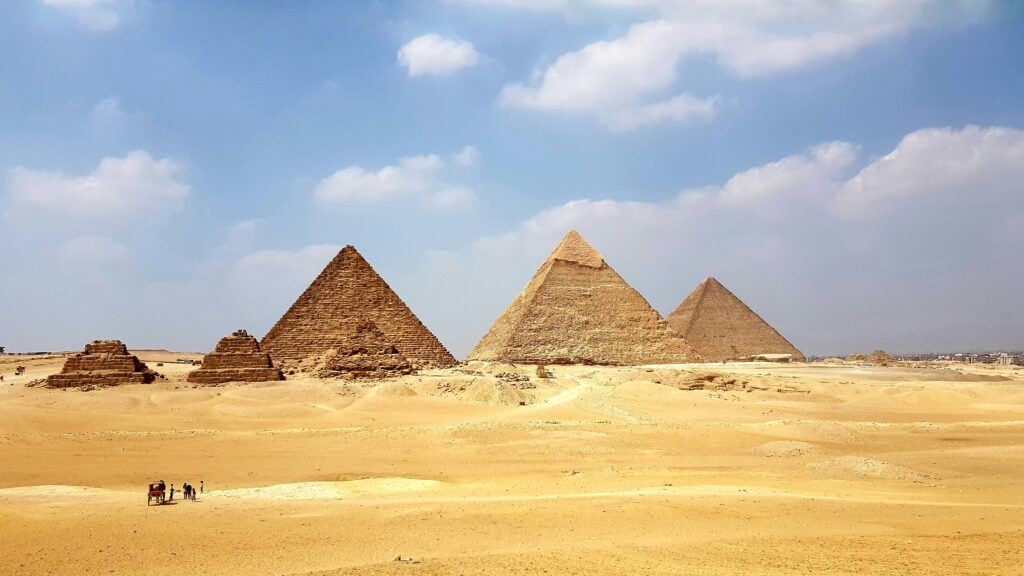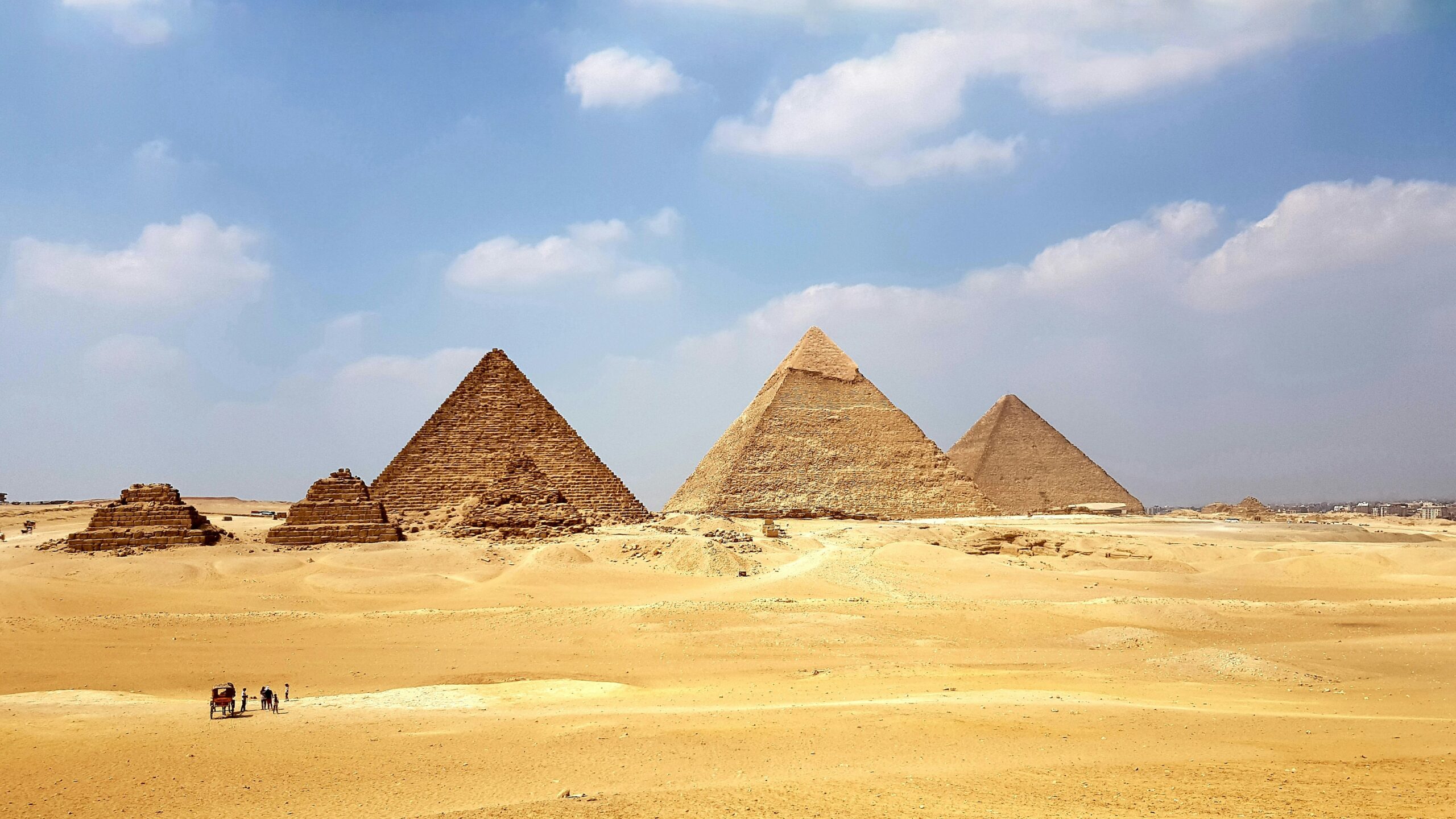
Imagine the scene: the Nile River valley, over 8,000 years ago. It was here, in this fertile cradle, that the seeds of one of history’s greatest civilizations were sown. This was the Predynastic Period, a time that predates Egypt’s famous pyramids, mummies, and golden treasures. During this nascent phase, which stretched from approximately 6000 to 3100 BCE, Egypt was far from the unified and powerful kingdom it would become. Instead, small, autonomous communities dotted the riverside, sustained by the life-giving floods of the Nile.
The Predynastic era saw the Nexus of agriculture with Egyptian culture. The inhabitants, adept at harnessing the river’s annual inundation, cultivated wheat and barley, which led to a surplus in food. This in turn spurred population growth and social complexity. I draw attention to the significance of their agricultural revolution. It not only fed a burgeoning population but also freed up time for other pursuits. The people began to specialize in different trades, which catalyzed the evolution of society.
But the most momentous outcome was the coalescence of these communities. A shared culture began to emerge, with distinct pottery styles, religious beliefs, and perhaps a common language. This social cohesion set the stage for what was to follow: the unification of these settlements into larger political entities. It’s pivotal to recognize the importance of these developments. They established the groundwork for a civilizational leap into what is conventionally seen as the ‘start’ of Ancient Egyptian history — the Early Dynastic Period.
The transition from the Predynastic to the Early Dynastic Period was marked by significant advancements, and I’ll show you how these laid the foundation for the famous Egypt we’re so familiar with today. Think of the Predynastic era as Egypt’s formative years, where the basic units of its later greatness were being unknowingly crafted along the banks of the Nile. As we prepare to move from this period of prehistoric culture to one of Egypt’s consolidations under a centralized authority, we approach an era where legendary figures stepped into the light of history and the very first hieroglyphs began to be drawn.
The Foundation Stone: Early Dynastic Period
If I were to identify a pivotal chapter in the saga of Ancient Egypt, the Early Dynastic Period would be it. This time saw two distinct regions, Upper and Lower Egypt, come together under the sophisticated rule of King Menes, also known as Narmer. Some historians debate the identify of this unifying figure, pondering if Menes and Narmer were the same person or two separate individuals. Regardless, the establishment of the first Egyptian dynasty around 3100 BCE was a defining moment.
During this transformative period, the foundation for Egypt’s future splendor was laid with significant advances such as hieroglyphic writing. This enigmatic system of writing was not merely a means of communication; it was integral to the Egyptians’ complex religious beliefs, enabling them to inscribe their thoughts and rituals on temple walls and in burial tombs. Hieroglyphics became one of the world’s most recognizable art forms, still captivating curiosity and scholarly effort to decipher them today.
In addition to the linguistic leap forward, the Early Dynastic Period introduced ambitious architectural undertakings. The prototypical forms of the monumental architecture symbolizing Egypt in the global consciousness began here. Mastery over stone and establishing early forms of pyramid construction demonstrated Egyptians’ advanced understanding of engineering and their devotion to their divine rulers.
Key figures other than King Menes emerged during this era, each leaving a stamp on the historical timeline. Pharaoh Djoser, for instance, much later in the period, commanded the construction of the step pyramid at Saqqara, which stands as a precursor to the more famous pyramids of the subsequent Old Kingdom.
With the foundations securely in place, the scene was set for one of the most awe-inspiring epochs of human history – the Old Kingdom. The advancements of the Early Dynastic Period heralded a future graced by the construction of the pyramids, a saga that would reach its zenith with the Great Pyramid of Giza. One might argue that the seeds sown in the fertile Egyptian soil during the Early Dynastic Period bloomed into a civilization of unparalleled grandeur that resonated through millennia.
The Pyramid Age: Marvels of the Old Kingdom
I often refer to the Old Kingdom as the ‘Pyramid Age’, a time synonymous with the enduring legacy of some of Egypt’s most iconic monuments. In this era, from around 2686 to 2181 BCE, Egypt enjoyed significant advancements in architecture, arts, and statecraft.
The Fourth Dynasty pharaohs, such as Khufu, Khafre, and Menkaure, remain etched in history as the great pyramid builders. Their monumental tombs at Giza still stand as testaments to their power and the remarkable capabilities of ancient Egyptian civilization. Understanding these structures is not just about appreciating their grandeur but also deciphering the societal organization, religious beliefs, and technological prowess that their construction required.
During the Old Kingdom, Egypt saw a flourishing of culture in many forms. Art became more refined, with sculptors and painters achieving new levels of realism and delicacy. Literature blossomed too, offering us insights into the values, humor, and daily life of the time. All of these were underpinned by a developed administrative system that managed resources, labor, and the complex logistics of a burgeoning state.
However, the splendor of the Old Kingdom did not last forever. It eventually waned due to economic difficulties, reduced Nile floods, and political strife. The once-centralized authority of the pharaohs began to diminish, leading to the era known as the First Intermediate Period, a time characterized by division and decline.
A Nation Divided: The First Intermediate Period
The close of the Old Kingdom didn’t merely mark the end of an era characterized by grand architectural projects like the pyramids. It ushered in one of Egypt’s most tumultuous times: the First Intermediate Period. I’ll walk you through the significance of this era that is often curtained by the splendor of previous dynasties.
During this period, Egypt was leaving the warmth of centralized rule, moving into what can only be described as a political winter. The pillars of the Old Kingdom’s administrative structure crumbled as the central authority weakened, ushering in nearly two centuries of decentralization. As the pharaonic power waned, provincial governors, known as nomarchs, became the new power brokers, controlling regions that operated almost like individual states.
An examination of economic activity during the First Intermediate Period reveals a distressing picture. A severe drought, likely caused by a low Nile flood, hampered agriculture, which was the lifeblood of the Egyptian economy. This was not a mere fiscal downturn; it was a blow that reverberated through every social stratum, leading to widespread hardship.
The social fabric that had kept Egyptian society tightly knit started to unravel. The art of the time reflects a society in distress; it was not as refined or idealized as it had been during the Old Kingdom. Funerary customs shifted, becoming more individualistic as community ties frayed in the wake of the collapse.
While the First Intermediate Period is often cast in a shadow of decline, it’s important to acknowledge that it was also a crucible for change. Local rulers adapted new strategies for administration and survival, setting the foundation for what would become one of the most celebrated times in ancient Egypt’s history: the Middle Kingdom.
The Middle Kingdom: A New Chapter of Unification
Imagine a nation fractured at its core – that was Egypt following the First Intermediate Period. Hunger for power and stability brought forth an era known as the Middle Kingdom, an age where the fragments of a once-glorious civilization sought to rekindle their unified spirit. Under the banner of Pharaoh Mentuhotep II, a new age dawned, one marked by political and social harmony.
Mentuhotep’s reign marked the success of his mission: UNITING a divided land. His name would forever echo in the annals of history as the ruler who reinstated the majesty of Pharaohs and brought peace to a land in unrest.
But reunification was just the beginning. Art and culture flourished anew: literature, sculpture, and architecture soared to new heights as Egypt revisited its creative roots. During this period, the classical Egyptian style of art that scholars admire was born.
Trade networks and diplomacy extended beyond the Nile, establishing Egypt as a formidable power to be reckoned with on the global stage. Contacts with distant lands enriched the Egyptian economy and introduced an era of prosperity that paved the way for a cultural reawakening.
As the Middle Kingdom sunsetted, however, new shadows began to gather on the horizon. The Second Intermediate Period loomed, bringing with it a fresh set of challenges, both from within and from the encroaching sands that hid foreign interests and leaders, like the Hyksos. This coming age would test the mettle of the unified Egyptian state and redirect the course of its history once again.
Legacy of the Pharaohs: Understanding Egypt’s Timeless Civilization
As I navigate through the web of history that Ancient Egypt has left behind, it becomes evident that the civilization wasn’t just made of stone and sand but of resilience, innovation, and a quest for eternity. Each period contributed layers to Egypt’s rich historical tapestry, enriching the narrative of human progress.
The challenges of preservation keep Egyptologists and historians on their toes, as each unearthed artifact or deciphered hieroglyph offers a deeper understanding of the ancients’ way of life. The contemporary quest to unlock Egypt’s past comes with the responsibility to protect and honor this precious legacy.
From the bustling streets where traders haggled to the silent tombs that promise immortality, Egypt’s saga is forever etched in mankind’s collective memory. The fascination with pharaohs, pyramids, and gods transcends borders and eras, stirring curiosity and academic pursuit across the globe.
In an era that increasingly looks to the stars, the past remains a grounding force, telling the stories of those who committed their lives to eternity. Egypt’s civilization stands as a humbling and awe-inspiring testament to human capability and the relentless drive to leave a mark for future generations.

